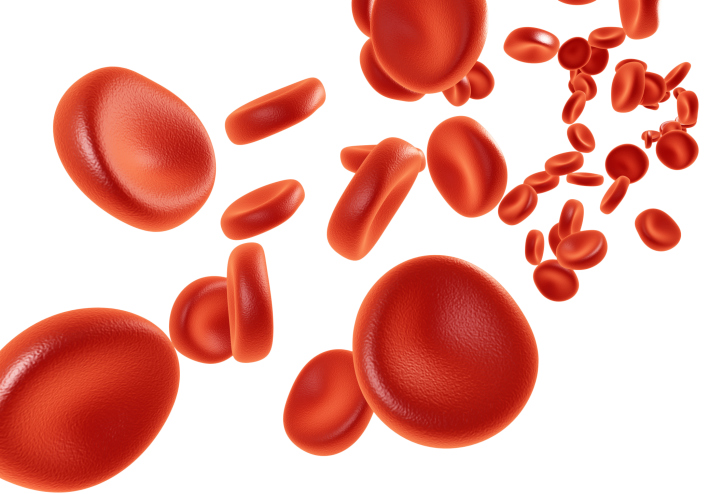 Even though multiple myeloma is considered a rare cancer that affects the plasma cells, it is quickly becoming a growing concern within the African American community. The American Cancer Society (ACS) estimates that roughly 24,000 new cases will be diagnosed in the United States this year. According to the National Cancer Institute, multiple myeloma represents 1.3 percent of new cancer cases in this country each year.
Even though multiple myeloma is considered a rare cancer that affects the plasma cells, it is quickly becoming a growing concern within the African American community. The American Cancer Society (ACS) estimates that roughly 24,000 new cases will be diagnosed in the United States this year. According to the National Cancer Institute, multiple myeloma represents 1.3 percent of new cancer cases in this country each year.
With this information we decided to host an in depth Q&A with Dr. Melvin Gaskins (oncologist).
BDO: What is multiple myeloma and how does it affect one's health? What are the symptoms and how close are we to a cure?
Dr. Gaskins: Multiple myeloma is a disease characterized by an abnormal growth of plasma cells in the bone marrow. This may present as destructive bone lesions, anemia (low blood count), and increased calcium level or kidney failure. The disease is generally considered incurable however survival has dramatically increased over the past several years.
BDO: Are African Americans more at risk for multiple myeloma, than in the past?
Dr. Gaskins: Multiple myeloma counts for about 1.4% of all cancers. There were over 24,000 new cases in the United States last year. There was an estimated 11,000 deaths due to multiple myeloma. African American and blacks from Africa have about a 2-3 times higher risk of developing multiple myeloma. The cause of this is unknown.
BDO: What kind of doctors do I see if I think I have multiple myeloma?
Dr. Gaskins: In general your primary care physician may suspect multiple myeloma after doing some routine yearly labs or if you have some bone pain. He will then send you to a hematologist/oncologist or a medical oncologist to confirm the diagnosis.
BDO: What testing would I need to undergo to make sure I don't have multiple myeloma?
Dr. Gaskins: There are many blood test involved to assess your kidneys, the calcium level, blood counts and for abnormal proteins. You will also get a bone marrow biopsy to determine the number of abnormal plasma cells in the bone marrow. Finally you will have x-rays of all of the bones to see if they are involved with myeloma.
MUST READ: Understanding Your Multiple Myeloma Treatment Options
BDO: What are multiple myeloma treatment alternatives?
Dr. Gaskins: Treatment may involve chemotherapy, immunotherapy and steroids. In some cases individuals may need radiation therapy if they have painful bone involvement. Patients who are younger than 65 years old should also be considered for a stem cell transplant. That involves taking normal bone marrow from an individual then giving high doses of chemotherapy to wipe out all of the abnormal cells. After that the normal cells are infused back into the individual.
BDO: Once diagnosed does treatment begin immediately?
Dr. Gaskins: Occasionally after all the tests have been run you are determined not to have "full blown" multiple myeloma although you may have some abnormal cells. Those persons are at risk for developing multiple myeloma later and are followed very closely by their physicians with regular blood tests. There is no need to start treatment immediately.
BDO: If treatment is needed now, what are my options and how likely am I to survive?
Dr. Gaskins: Your doctor will determine the best course of therapy for you based on your age, the stage of your disease and your general physical condition. All of those things factor into the likelihood of surviving the disease.
BDO: My aunt was diagnosed with 2nd stage multiple myeloma. What do the different stages mean?
Dr. Gaskins: Staging for multiple myeloma is a little different than other cancers. For stage I disease individuals are only mildly anemic, they have normal calcium and they have a low number of abnormal proteins. For stage III disease there is more bone involvement, significant anemia, increased calcium and a high number of abnormal proteins. Stage II individuals do not meet the criteria for stage I or stage III.
BDO: What are potential side effects I need to know about during and after multiple myeloma treatments?
Dr. Gaskins: Side effects related to the treatment may include nausea, vomiting, peripheral neuropathy (numbness in the fingers and toes), low white blood cell count, low platelets, weakness and fatigue. After successful treatment all of these side effects should resolve or be significantly reduced.
BDO: What are the success rates after treatment?
Dr. Gaskins: Survival rates for multiple myeloma have been steadily increasing over the past decade and a half. This is correlated with the many new treatments that have been developed.
BDO: What kind of advice can I give to someone with multiple myeloma to encourage them to make life changes that will make managing the disease better?
Dr. Gaskins: If you have been diagnosed with multiple myeloma the most important thing is to follow your prescribed treatment regimen. Clearly the treatments have changed our thinking of multiple myeloma. 15 years ago the overall survival from multiple myeloma was about 3 years. With modern approaches to the treatment of multiple myeloma we now have reason to believe that we may be approaching a cure.
BDO: What can I do to make sure I don't get multiple myeloma?
Dr. Gaskins: It is difficult to say what to do to prevent multiple myeloma. This is especially true in view of the fact that we are not absolutely sure what causes multiple myeloma. The best thing to do is to do the same thing that you would do to lower your risk for all cancers. This includes a healthy diet (low in fat, low in processed sugars) and moderate exercise at least 3 days a week.








